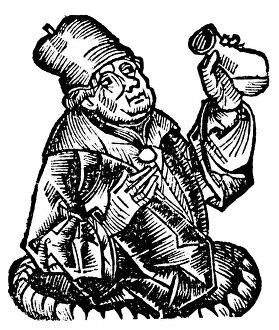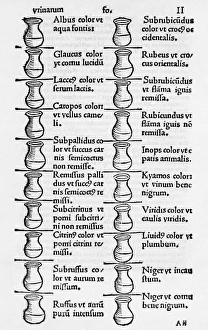Uroscopy Collection
"Exploring the Ancient Art of Uroscopy: A Journey through Centuries of Medical Diagnosis" Step back in time to the 14th century as Gentile da Foligno
All Professionally Made to Order for Quick Shipping
"Exploring the Ancient Art of Uroscopy: A Journey through Centuries of Medical Diagnosis" Step back in time to the 14th century as Gentile da Foligno, an Italian physician, meticulously examines a sample of urine. In 1493, alongside Arab physician and philosopher Avicenna (Ibn Sina), they delve into the fascinating world of uroscopy. Fast forward to 1497 when a doctor carefully inspects the urine sample of a female patient, seeking clues about medieval syphilis. The importance placed on uroscopy is evident as Gentile da Foligno himself dedicated much of his work to this practice. As we move into the 16th-17th centuries, witness physicians examining specimens of patients' urine with great precision. This era showcases how uroscopy continued to evolve and be embraced by medical professionals. Avicenna's influence cannot be overlooked; he was not only an interpreter of Aristotle but also made significant contributions to Islamic medicine. His expertise in uroscopy further solidified its place in medical history. Traveling forward in time yet again, we encounter "La Pharmacie Rustique, " a composition from c1775 that depicts various aspects of pharmacy life including uroscopic examinations. It serves as a reminder that even during this period, uroscopy remained relevant and essential for diagnosing ailments. Woodcuts from different eras provide glimpses into moments where physicians diagnose illnesses solely by observing patients' urine samples. These visual representations capture both the intricacies and significance attached to this ancient diagnostic technique. From Gentile da Foligno's pioneering efforts in the 14th century to Avicenna's profound impact on Islamic medicine, it has stood the test of time as an invaluable tool for understanding human health. Its legacy continues today as modern medicine builds upon these historical foundations while embracing new advancements.


















